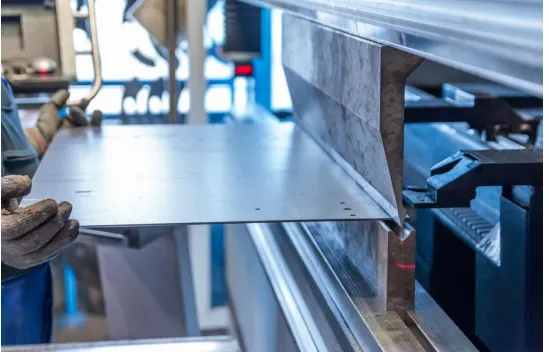Mastering Metal: Creative Approaches to Custom Fabrication Work

Custom fabrication is about more than building objects. It is the art of transforming raw materials into useful and unique designs. People rely on fabrication in industries like construction, automotive, technology, and even art.
The process combines creativity, skills, and modern tools to produce results that match specific needs. By looking at creative approaches to custom fabrication, we can see how design and innovation come together to create one-of-a-kind solutions.
Also Read: What Makes Liposuction in Dubai Worth Considering?
Blending Traditional Skills with Modern Technology
Fabrication once relied only on manual skills and hand tools. Today, traditional knowledge is still important, but modern technology takes the process to new levels. Craftspeople mix old techniques like welding and bending with machines that cut and shape with precision. This blend allows projects to maintain the charm of handmade work while reaching higher accuracy. It also creates a balance between art and efficiency.
For example, a handmade railing can have a timeless look, but with machine support, it can also fit exact safety standards. Traditional skills keep projects unique, while machines ensure they are safe and long-lasting.
Using Computer-Aided Design (CAD) for Better Results
One of the most important creative tools in custom fabrication is computer-aided design (CAD). Designers use CAD software to plan every detail of a project before cutting materials. This method makes it easy to test out different shapes and styles without wasting resources.
CAD helps fabricators try bold designs and adjust them quickly. It is both cost-effective and inspiring, giving makers a chance to imagine new possibilities without risk. CAD also makes collaboration smoother. A designer can share digital files with a client, who can suggest changes before the project begins.
Experimenting with Mixed Materials
Custom fabrication is not limited to one type of material. The following can all work together in one project:
- steel
- aluminum
- wood
- glass
- plastics
This mix gives products more personality and character. For example, pairing metal with wood can create furniture that is both strong and warm in appearance. Combining glass with steel can give a modern, sleek look. Experimenting with mixed materials leads to unique creations that stand out in both function and style.
Incorporating Sustainable Practices
A growing creative approach to fabrication is using sustainable methods. Many fabricators now recycle scrap materials or design products that reduce waste. Some also use eco-friendly coatings or finishes. The goal is to create something useful while keeping the environment in mind. This trend not only saves resources but also appeals to customers who want greener choices.
For instance, recycled aluminum is lighter on the planet and works just as well as new material. Using solar-powered machines also lowers the carbon footprint of a project. Sustainable fabrication shows that creativity can support both design goals and responsibility toward the planet.
Adding Artistic Touches to Everyday Items
Custom fabrication is not always about machines and construction. It can also include artistic expression. Fabricators often add patterns, textures, or shapes that make ordinary products special.
For example, a gate can be more than a barrier. It can feature creative cutouts or engravings. A table can include decorative inlays or unique metal legs. Adding these artistic details shows how fabrication can combine beauty with utility.
In many cases, clients ask for designs that reflect culture or personal identity. Symbols, lettering, or even family crests can be included in fabricated items. This makes products not just functional but also meaningful.
Leveraging Advanced Cutting and Shaping Tools
Modern fabrication tools give makers more freedom to be creative. Laser cutters, plasma cutters, and waterjet machines allow for detailed designs that were once too difficult. These tools can cut complex patterns, curves, and shapes into metal or other materials with extreme accuracy.
For example, a laser cutter can create delicate patterns in sheet metal that would take hours by hand. This technology opens doors to ideas that once seemed impossible.
CNC (computer numerical control) machines also help with shaping. They let fabricators repeat complex designs with perfect accuracy. This precision makes it possible to mass-produce items while keeping a creative edge.
Customizing Products for Individual Needs
One of the strongest creative approaches in fabrication is customization. Clients often want products that reflect their personal taste or unique requirements. This can include furniture designed to fit unusual spaces, machinery parts built to exact specifications, or signs with unique designs.
Customization allows fabricators to solve problems in ways that standard products cannot. It also builds strong connections between creators and clients, as each project feels personal.
For example, a homeowner may want a staircase that curves in a specific way to fit a tight space. Or a business may request signage with a logo cut in metal. Each project highlights how fabrication adapts to individual needs.
Partnering Across Industries for Innovation
Collaboration is another creative path in custom fabrication. By working with designers, engineers, and artists, fabricators can explore new ideas. For instance, an architect may partner with a fabricator to create custom building features. A fashion designer might work with a fabricator to produce unique accessories.
A metal fabrication company may collaborate with technology firms to create custom machine parts. These partnerships push creativity forward and lead to groundbreaking results.
Working with different industries also brings fresh perspectives. What works in one field may inspire new techniques in another. This exchange of ideas helps the fabrication industry grow in exciting directions.
Exploring Modular and Flexible Designs
Another trend in fabrication is modular design. Instead of building a single large piece, fabricators create smaller parts that fit together. These modules can be rearranged, replaced, or expanded based on need. This approach is creative because it allows flexibility.
For example, modular furniture can be adapted for different spaces. Industrial equipment built with modular parts can be repaired or upgraded easily. This design approach gives both makers and clients more control and freedom.
Modular systems also save money in the long run. Clients can update only certain parts instead of replacing an entire product. This makes modular design both creative and practical.
All About Custom Fabrication Work
Custom fabrication work allows people to turn unique ideas into real products. Creative approaches help make designs more functional and visually appealing. These methods also give flexibility to meet different customer needs.
With the right techniques, businesses can stand out from their competition. Overall, creative fabrication leads to better results and more satisfied clients.
Looking for more tips and ideas? We’ve got you covered. Check out some of our other posts now.






